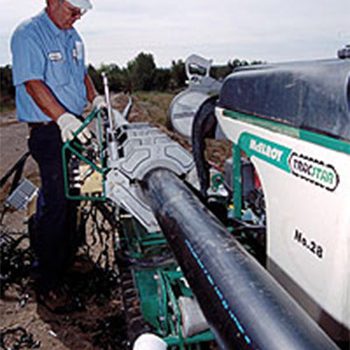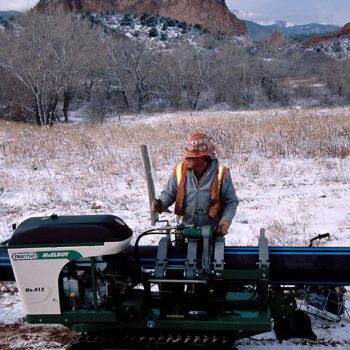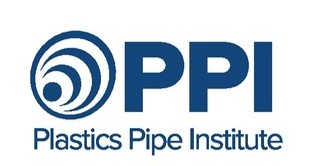Pawnee County Rural Water District # 1 is on top of the game when it comes to providing water to its countryside clientele. That is why they knew exactly what to do when they were faced with replacing a deteriorating waterline that spanned a branch of Keystone Lake.
“We were living on borrowed time,” said Field Supervisor Robert Baugh as he pointed up at the stretch of PVC that ran along the underside of the bridge crossing the Bear Creek arm of Keystone Lake. The pipeline sags in places and one part of it had been repaired years ago by tying it to the bridge with a piece of rope. “Glued pipe isn’t supposed to bend that far,” said Baugh. There are five 90-degree elbow joints at each end of the bridge that have also presented problems in the past.
We were living on borrowed time
The pipeline transports water to Pawnee County water towers from wells that lye one mile south of Westport. Until 1984, the district purchased its water from the city of Cleveland. Since 1984 the district has been self-sufficient.
In recent years, the district has replaced its failing waterlines with polyethylene (PE) and this project presented demands that were perfect for the application of PE. Water Manager Don Topping decided to open the project up for bids. “We didn’t even want to talk to a contractor unless he knew how to bid the job with PE,” said Topping. “With PVC you have a joint every 20 feet. If someone digs in and cuts your line you may have to replace the whole section. We spend almost all of our time repairing joint leaks in PVC. If someone cuts into PE you just put on a repair coupling and go on about your business.” Topping continues, “Its the best stuff they have. Its tough, pliable and you can pull it.” Topping spent 17 years as a member of the board before becoming the manager of the water district.
Receiving no response after a call for bids, Topping decided that the District could do the job itself. The district called Ditch Witch of Tulsa to handle the horizontal bore.
The 600-foot bore was performed with the new Ditch Witch JT2720 All Terrain. The directional drilling machine is designed to drill through solid and broken rock, cobble and gravel or about any material without a mud motor or auxiliary fluid system. Six-inch diameter HDPE was pulled back through the bore with the drill’s 27,000 pounds of pullback power.
While the drilling machine was boring under Bear Creek, Baugh set up a staging area to fuse the pipe together on the other side of the creek. Baugh loaded six inch PE into McElroy Manufacturing’s new TracStar 28 fusing machine. “This is quite a piece of equipment,” said Baugh as he patted the TracStar with an open hand as if it was a pet of some kind. “It’s a heck of a lot easier to make these joints by yourself. With the older style machine you wear a guy out after eight hours of fusing, using a pry bar to wrestle the pipe into position, and it takes longer.” The TracStar 28 is a hydraulic fusion machine that is mounted on a track system to make it not only mobile, but also self-propelled. “I just drag the pipe into place with the TracStar and fuse it together.”
When asked about environmental advantages of PE Baugh responds with a smile, “All I know is that we have five inch PVC joints all over this district that we have to dig up and patch because of leaks. With PE, the joints don’t leak so there isn’t a chance of anything seeping into the line and contaminating our drinking water.”



